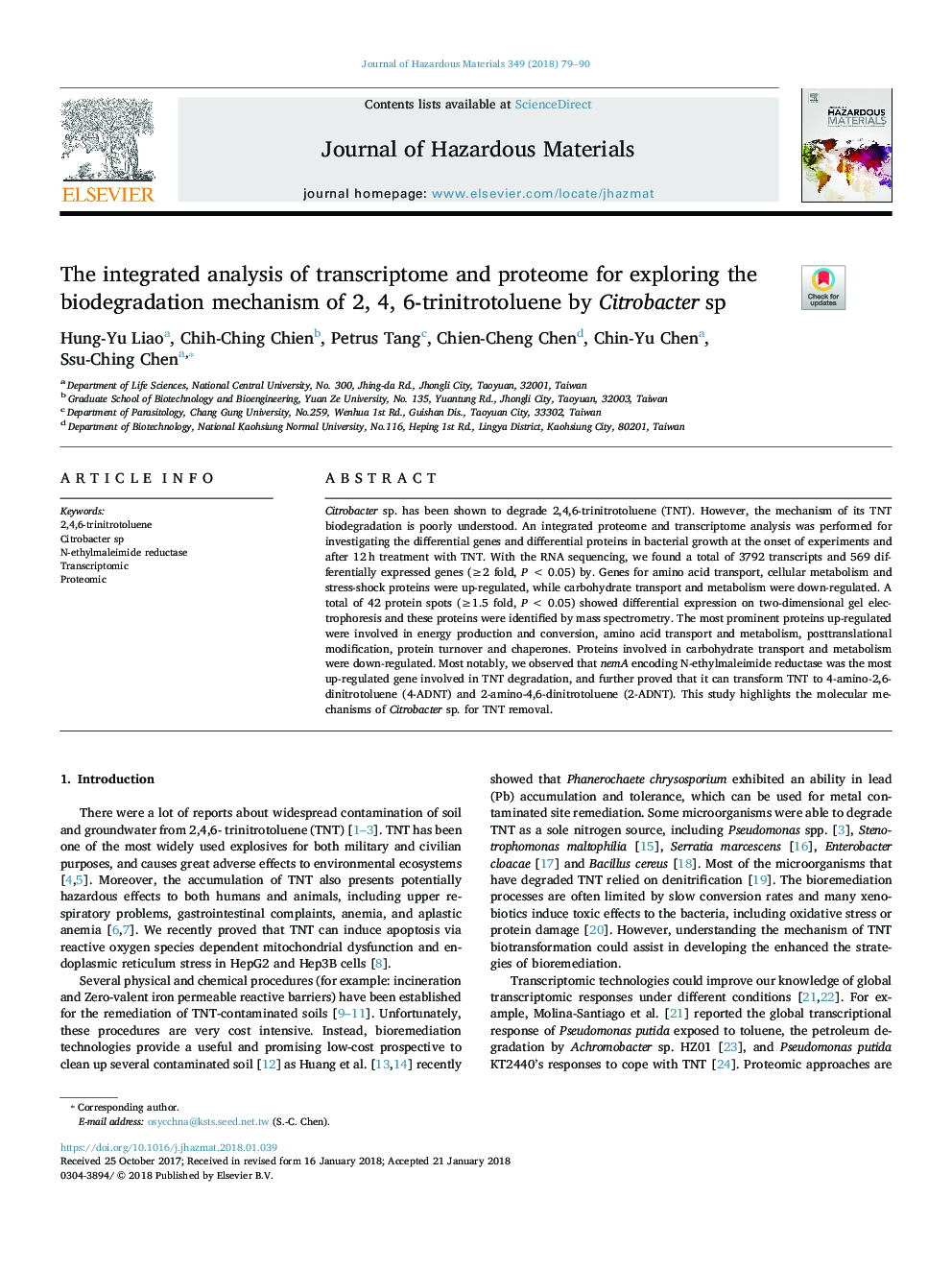| Article ID | Journal | Published Year | Pages | File Type |
|---|---|---|---|---|
| 6968834 | Journal of Hazardous Materials | 2018 | 12 Pages |
Abstract
Citrobacter sp. has been shown to degrade 2,4,6-trinitrotoluene (TNT). However, the mechanism of its TNT biodegradation is poorly understood. An integrated proteome and transcriptome analysis was performed for investigating the differential genes and differential proteins in bacterial growth at the onset of experiments and after 12â¯h treatment with TNT. With the RNA sequencing, we found a total of 3792 transcripts and 569 differentially expressed genes (â¥2 fold, Pâ¯<â¯0.05) by. Genes for amino acid transport, cellular metabolism and stress-shock proteins were up-regulated, while carbohydrate transport and metabolism were down-regulated. A total of 42 protein spots (â¥1.5 fold, Pâ¯<â¯0.05) showed differential expression on two-dimensional gel electrophoresis and these proteins were identified by mass spectrometry. The most prominent proteins up-regulated were involved in energy production and conversion, amino acid transport and metabolism, posttranslational modification, protein turnover and chaperones. Proteins involved in carbohydrate transport and metabolism were down-regulated. Most notably, we observed that nemA encoding N-ethylmaleimide reductase was the most up-regulated gene involved in TNT degradation, and further proved that it can transform TNT to 4-amino-2,6-dinitrotoluene (4-ADNT) and 2-amino-4,6-dinitrotoluene (2-ADNT). This study highlights the molecular mechanisms of Citrobacter sp. for TNT removal.
Related Topics
Physical Sciences and Engineering
Chemical Engineering
Chemical Health and Safety
Authors
Hung-Yu Liao, Chih-Ching Chien, Petrus Tang, Chien-Cheng Chen, Chin-Yu Chen, Ssu-Ching Chen,
